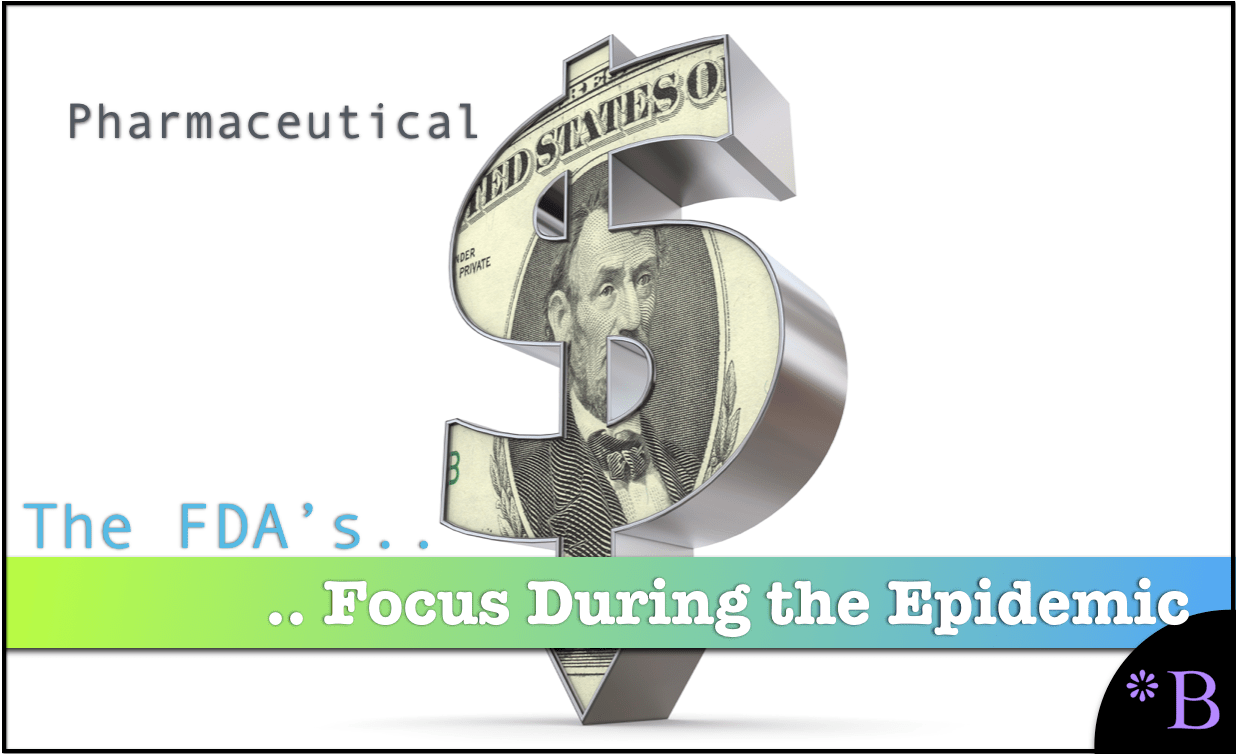How FDA Did Nothing to Stop And Turned a Blind Eye to The Opioid Epidemic
Executive Summary
- The FDA-approved opioids and never did a thing to moderate the opioid epidemic.
- The FDA did this while knowing the addictive nature of opioids.

Introduction
The story of the opioid crisis is in part a story of the complete corruption at the FDA to allow first opioids to be approved, but secondly, the FDA ignoring the overprescription and overuse of these drugs. The only conclusion that one can come to is that the agency is completely captured by the pharmaceutical industry,
Our References for This Article
If you want to see our references for this article and related Brightwork articles, visit this link.
A Description of Opioids
The following is a good description of opioids.
Common semi-Synthetic Opioids include Percocet, Vicodin, and OxyContin.
These medications are generally used to treat moderate to severe pain, although some can be prescribed for coughing and diarrhea. These drugs are highly addictive and present a high risk of misuse. Semi-Synthetic Opioid misuse can cause slowed breathing, which often results in hypoxia, a condition that results when too little oxygen reaches the brain. Hypoxia can induce coma, permanent brain damage, and even death. – Addiction Center
It is jaw-dropping that the opioid manufacturers extended opioid approval for coughing and diarrhea. This is referred to as “Evergreening,” where the pharmaceutical company makes successive applications to extend the drug for different conditions.
The FDA Proves to be a Pawn of Purdue Pharma
Purdue had long denied that the original OxyContin was especially prone to abuse. But, upon receiving its patents for the reformulated drug, the company filed papers with the F.D.A., asking the agency to refuse to accept generic versions of the original formulation—because they were unsafe. The F.D.A., ever obliging, agreed, blocking any low-cost generic competition for Purdue. For more than a year, Purdue continued to sell the original formulation of OxyContin in Canada.
Since Purdue made it more difficult to grind OxyContin pills, prescriptions have reportedly plummeted by forty per cent. This suggests that nearly half of the original drug’s consumers may have been crushing it to get high. – The New Yorker
Furthermore, after all of this was known, the FDA still gave Purdue approval to do the following.
In August, 2015, over objections from critics, the company received F.D.A. approval to market OxyContin to children as young as eleven. – The New Yorker
How is that even possible?
The Pharmaceutical Industry Proposes Rigged Clinical Trials Are The Gold Standard of Evidence
The American Cancer Society is another drug company-controlled health authority. This quote is from the American Cancer Society’s page on supplements.
Much of what you hear or read about dietary supplements is based on anecdotal evidence.
This is the assertion of all drug companies and the major health authorities that are aligned with drug companies that clinical trials are what prove drugs work. However, what they leave out is that the approving entity, the FDA in this case has no standards and is merely a pharmaceutical-controlled puppet agency.
- This is covered in the article How Low Are the FDA’s Standards of Evidence for New Drug Approval?
- See how the FDA allows chemotherapy drug studies to change their endpoints How Dangerous Cancer Drugs Had Endpoints Changed by Pharmaceutical Companies for FDA Approval.
- Learn how the FDA promoted the PPI scandal Why The FDA Did Nothing to Moderate Nexium Prilosec And PPI Prescriptions
- Learn how the FDA approved unsafe vaccines How Safe Are The Covid 19 Vaccines?
The Reality of What “FDA Approved” Means
Peer-reviewed journals have been shown to have massive problems, as is covered in the article The Often Hidden Problems With Peer Review Research. However, the FDA may even be worse than peer-reviewed journals as those on advisory boards that review clinical trials have both financial conflicts and see the industry as providing future employment opportunities. With the billions that can come from drug approval, paying off and promising future jobs to some FDA officials to get bad drugs approved is a small matter.
If the agency approving the study is a puppet of the industry and has financial conflicts with that industry. The top officials later leave the FDA to join the industry, making “real money,” than clinical trials, which are completely controlled by the pharmaceutical companies and which the FDA only sees as the end product, do not prove much of anything.
Opioids Are Just One Example of the Uselessness of FDA Approved Clinical Trials
The FDA-approved prescription opium, OxyContin, created the opioid epidemic, which Purdue Pharma stated was not addictive. After decades of the opioid epidemic, the FDA recently approved the use of OxyContin for children aged 11 to 15. Does that sound scientific?
Humans only have 5,000 years of history with opium, yet the FDA decided that prescription did not pose a significant addiction risk to the country.
In 2020, nearly 70,000 people died of opioid overdose. However, according to the logic presented by the American Cancer Society, opioid medications are based upon solid research — as they are prescription drug that was approved repeatedly by the FDA. The American Cancer Society is not concerned about the risks of opioids, which are just one category of pharmaceuticals, and they are worried about nutrition supplements.
And this is due to the profit motive and the fact that the pharmaceutical industry has thoroughly captured the FDA. This video points out that the drug companies and the drug distributors knew exactly what they were doing, creating addicts and killing people. The drug distribution companies like Cardinal Health and McKesson used political lobbying to stop the DEA from cracking down on them.